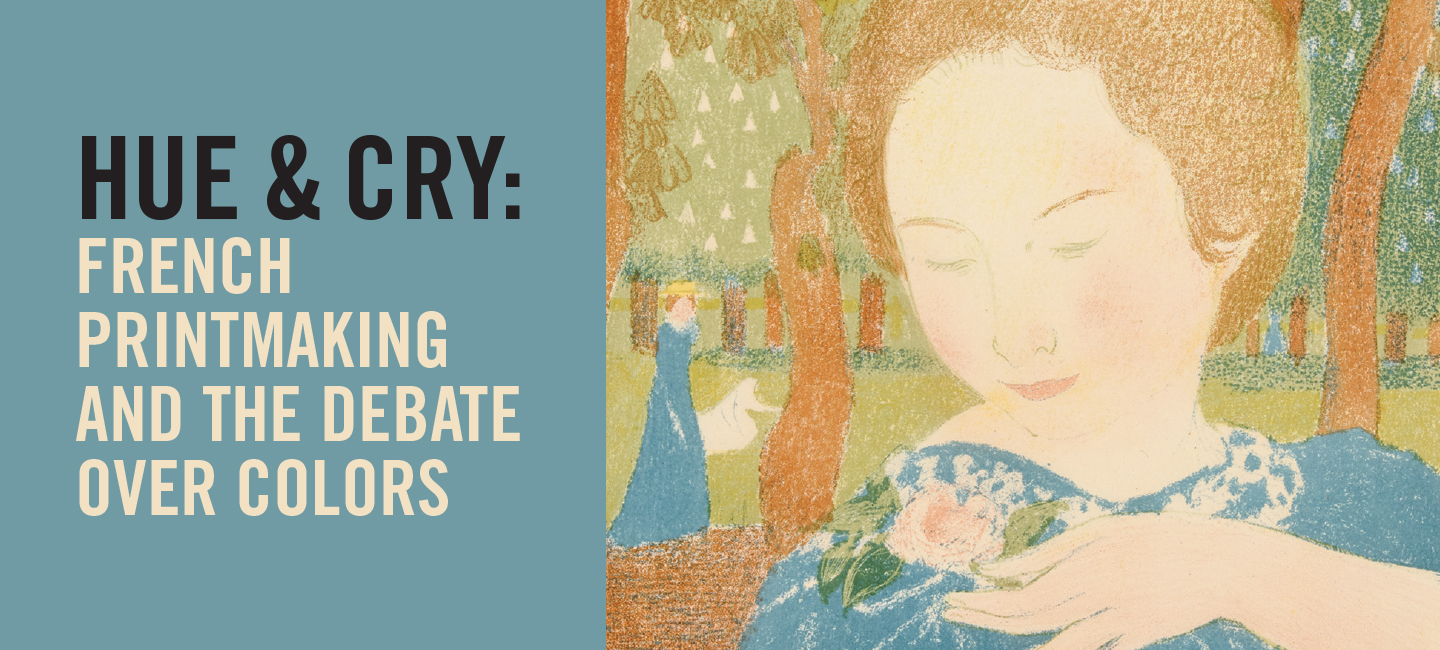Select Artists’ Biographies
Camille Pissarro
Professionally active throughout the second half of the nineteenth century, Camille Pissarro (1830–1903) influenced several generations of artists. Born in the Danish Caribbean colony of St. Thomas (now a part of the U.S. Virgin Islands), Pissarro first worked as an artist in Venezuela before settling permanently in 1855 in France, where he studied the work of the Realist and Barbizon painters. In later years, he was a key figure in Impressionist and Neo-Impressionist painting. A versatile printmaker, Pissarro experimented with assorted print techniques and also varied the media in his preparatory drawings to capture the correct color. Along with Edgar Degas, he is credited with championing the idea of the “original” print in this period, particularly through differentiating ink effects in impressions of the same print.
Mary Cassatt
Although her family disapproved of any future plans to practice as a professional artist, Mary Cassatt (1844–1926) was permitted to study painting at the Pennsylvania Academy of Fine Arts as a teenager. She moved to Paris in 1866 to continue her training as an independent pupil in the studios of painting instructors of the École des Beaux-Arts, since women were not yet admitted at the French academy. Cassatt worked closely with Edgar Degas in the late 1870s and 1880s, after the French artist asked her to exhibit with the Impressionists in 1877. A major 1890 exhibition of ukiyo-e prints cemented Cassatt’s interest in color printmaking, prompting her 1891 portfolio of ten intaglio prints that directly borrowed from Japanese sources and echoed their intimacy in subjects of bathing, dressing, and maternal embraces.
Henri Rivière
Born in Paris, Henri Rivière (1864–1951) spent part of his childhood in the Pyrenees during the Franco-Prussian War. He eventually returned to Paris for his education and met Paul Signac (1862–1935) as a fellow student, prior to their future artistic training. By the early 1880s, Rivière’s illustrations were being featured in magazines and journals. One of those journals, Le Japon Artistique, had a profound influence on the artist, inspiring him not only to collect Japanese art, but also to make his own woodblock prints (shouldering the entire process himself), in addition to lithographs and etchings. Rivière primarily issued his prints in portfolios, which similarly reference his taste for japonisme: one Parisian portfolio, Thirty-Six Views of the Eiffel Tower, was made in homage to Hokusai’s Thirty-Six Views of Mount Fuji.
Édouard Vuillard
As a teenaged student, Édouard Vuillard (1868–1940) met some of the artists he would work most closely with in the following decade, including Ker-Xavier Roussel (1867–1944) and Maurice Denis (1870–1943). After training in a number of artists’ studios and taking courses at the Académie Julian, he gained entrance to the École des Beaux-Arts in 1887 to study academic painting. By the end of the decade, Vuillard joined with Les Nabis, a group of young artists who all differed in individual style but were interested in revitalizing painting, moving beyond academic and Impressionist modes to a more abstract and decorative form of representation. Like other Nabi painters and printmakers, Vuillard was heavily influenced by Japanese ukiyo-e color woodcuts.
Henri de Toulouse-Lautrec
Born to an aristocratic family in southern France, Henri de Toulouse-Lautrec (1864–1901) is more closely associated with Paris, particularly the lively neighborhood of Montmartre on the north side of the city. Montmartre was not only the artist’s home, but his muse, with the denizens of district’s nightlife populating his compositions: dancers, singers, theatregoers, and sex workers were Toulouse-Lautrec’s favored subjects. When frequenting the city’s concert halls and brothels, he often brought along his sketching materials, and indeed created more than 5,000 drawings in his short career. The immediacy of his on-site observations became a feature of Toulouse-Lautrec’s style and was carefully translated in his more than 300 compositions for prints and posters.
Jules Chéret
As one of the best known poster artists of the Belle Époque, Jules Chéret (1836–1932) revolutionized and elevated advertising imagery. Initially apprenticed to a lithographer in France, Chéret also studied at the École Nationale de Dessin before venturing to London for six years for further training in the art of lithography. Upon his return to France, the artist frequently employed figures popular in Rococo fêtes galantes in his advertisements for Parisian theaters, cabarets, and other entertainments. The popularity of his posters attracted more clients to Chéret, who would go on to design promotions for a wide variety of companies, from makers of humble consumer goods to railroads. In 1890, the French government awarded Chéret the Légion d’honneur for his contributions to the graphic arts.
